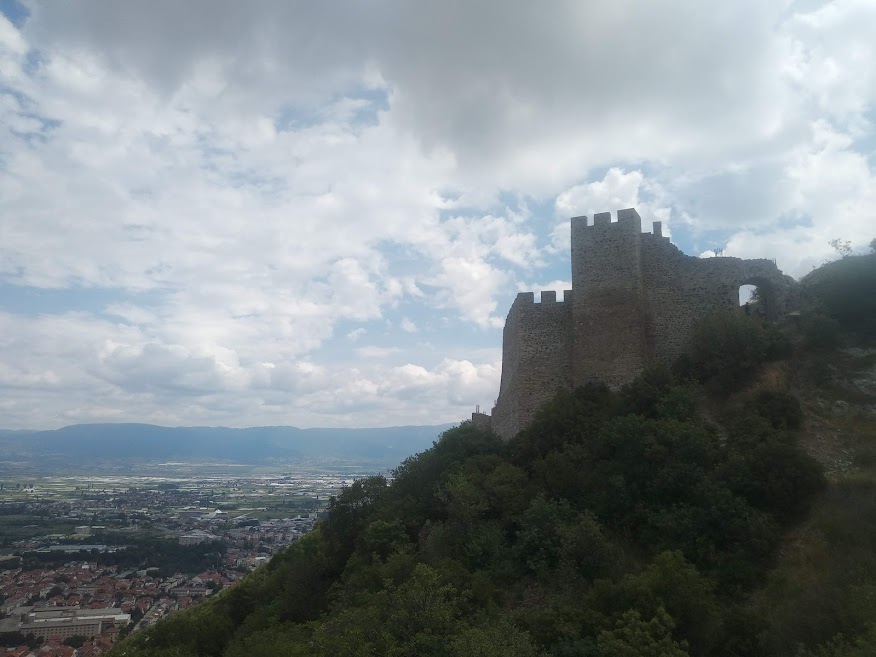Strumica fortress

In the 11th century, after the battle of Belasica, the Byzantine emperor Vasili II ordered his dukes to cross the hills around Strumica and set fire to the walls to clear all obstacles on the road to Thessaloniki. And in the 14th century, the Byzantine writer and scientist Nicephorus Gregory stayed for several days in Strumica where he found protection in the city “which rises, so to speak, above the clouds.” The further life of this fortress is connected with the rulers of the district, and it stopped at the time when the Turks left the cities.
The royal towers rise above the southwestern periphery of Strumica where important ancient roads intersected: the road Astibo – Astrajon – Dober – Idomeni – Thessaloniki (today’s Stip – Strumica – Valandovo – Dojran – Thessaloniki); the road to Strimon in the east (today’s Petrich) and to Stenae in the west (today it goes only to Konce, and not to Demir Kapija.
This fortress is located at an altitude of 445 meters and from there it is possible to see and control the entire Strumica valley. The fort could have been defended more easily if it had not been fortified, as it is steeply surrounded on all sides. This location allows the fortress to simultaneously control the three entrances to the city.
The suburbs of the city stretched at the northern foot of the hill, on the high terrace on which today lies the oldest part of Strumica. And it was covered with walls, and outside this space the necropolis was spread (at the old post office). Graves from Hellenistic times (3rd century BC) and the Roman period (3rd century AD) have been excavated in this area.
Photo credits:Vladimir Kunovski

